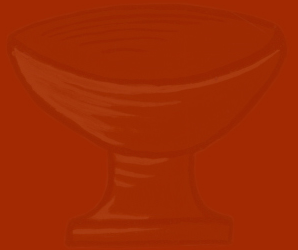
About this icon
This half figure depicting Saint Catherine describes her royal status with crown and royal cloak. Her posture is one of supplication to Christ as she holds the cross. The Byzantine Eagles shown on her cloak have their roots with the establishment of the Golden Militia by Emperor Constantine.
Saint Catherine of Alexandria
Saint Catherine of Alexandria, also known as Saint Catherine of the Wheel and The Great Martyr Saint Catherine, is a Christian saint and martyr claimed to have been a noted scholar in the early 4th century. She is said to be one of the saints to speak to Saint Joan of Arc. The Orthodox Churches venerate her as a "great martyr," and in the Roman Catholic Church, she is traditionally revered as one of the Fourteen Holy Helpers.
The myth of Catherine of Alexandria portrays her as being of noble birth and learned in the sciences. It was told that when only eighteen years old, Catherine presented herself to the Emperor Maximinus who was violently persecuting the Christians, upbraided him for his cruelty and endeavoured to prove how iniquitous was the worship of false gods. Astounded at the young girl's audacity, but incompetent to vie with her in point of learning the tyrant detained her in his palace and summoned numerous scholars whom he commanded to use all their skill in specious reasoning that thereby Catherine might be led to apostatize. But she emerged from the debate victorious. Several of her adversaries, conquered by her eloquence, declared themselves Christians and were at once put to death. Furious at being baffled, Maximinus had Catherine scourged and then imprisoned. Meanwhile the empress, eager to see so extraordinary a young woman, went with Porphyry, the head of the troops, to visit her in her dungeon, when they in turn yielded to Catherine's exhortations, believed, were baptized, and immediately won the martyr's crown. Soon afterwards the saint, who far from forsaking her Faith, effected so many conversions, was condemned to die on the wheel, but, at her touch, this instrument of torture was miraculously destroyed. The emperor, enraged beyond control, then had her beheaded and angels carried her body to Mount Sinai where later a church and monastery were built in her honour.
The spiked wheel has become emblematic of the saint, wheelwrights and mechanics have placed themselves under her patronage. According to tradition, she remained a virgin by governing her passions and conquered her executioners by wearying their patience, and also triumphed in science by closing the mouths of sophists. Her intercession has been implored by theologians, apologists, pulpit orators, and philosophers who before studying, writing, or preaching, they besought her to illumine their minds, guide their pens, and impart eloquence to their words. This devotion to St. Catherine which assumed such vast proportions in Europe after the Crusades, received additional éclat in France in the beginning of the fifteenth century, when it was rumoured that she had appeared to Joan of Arc and, together with St. Margaret, had been divinely appointed Joan's adviser. Her feast day is celebrated in Eastern churches on 25 November.




